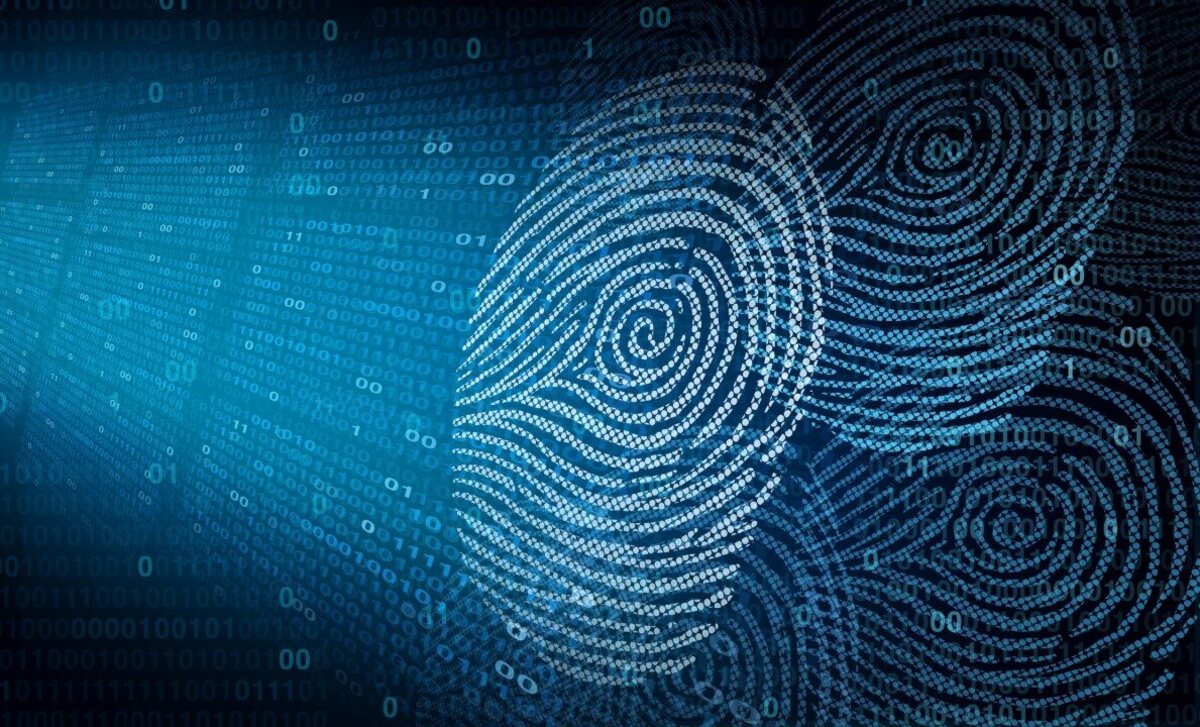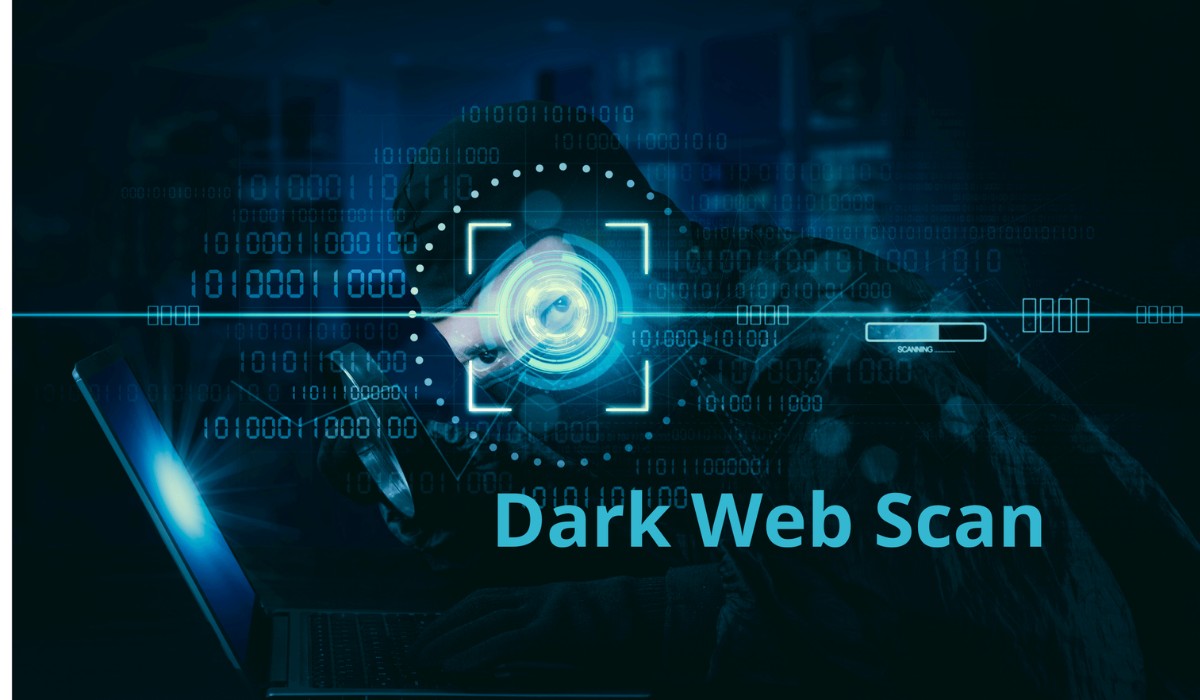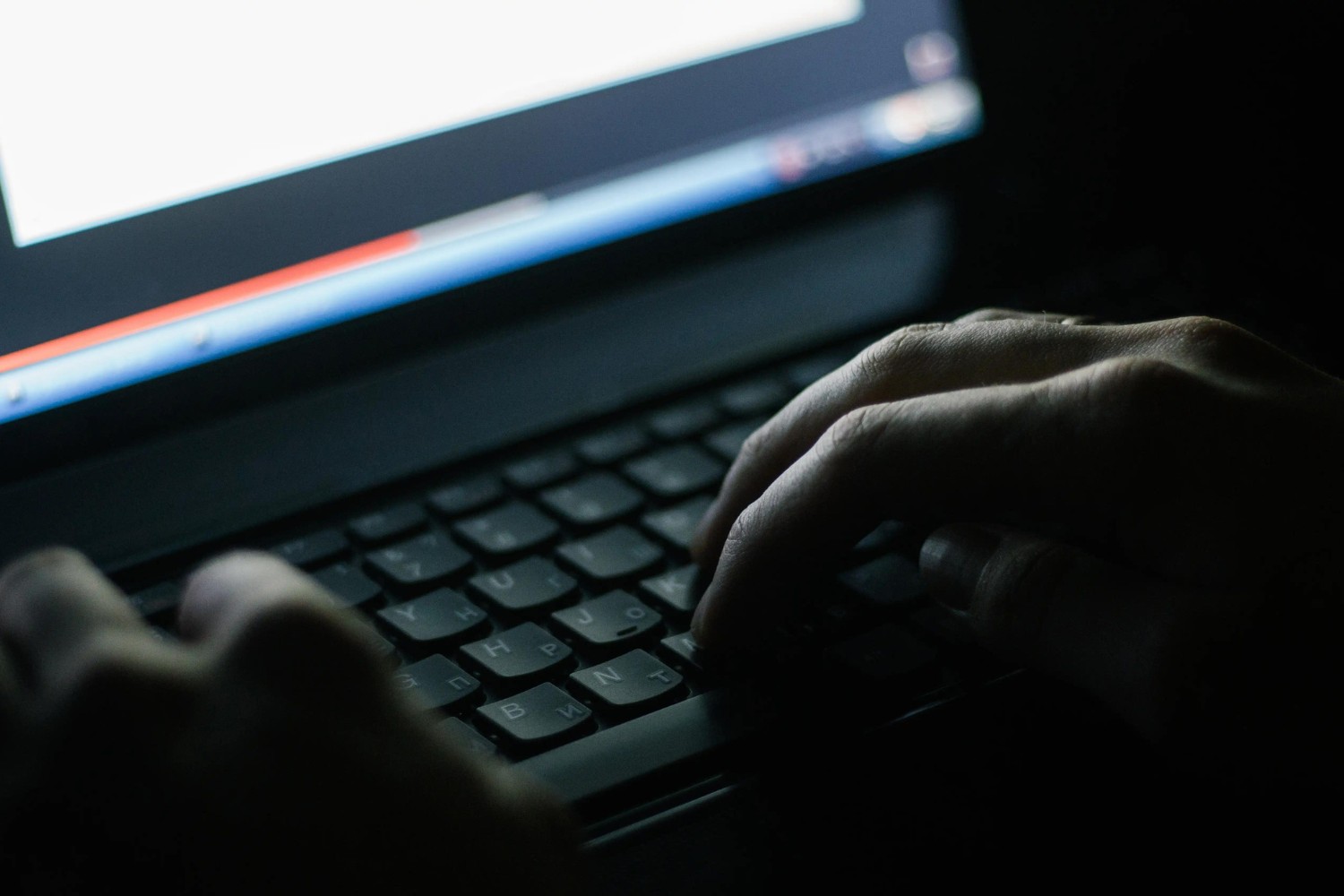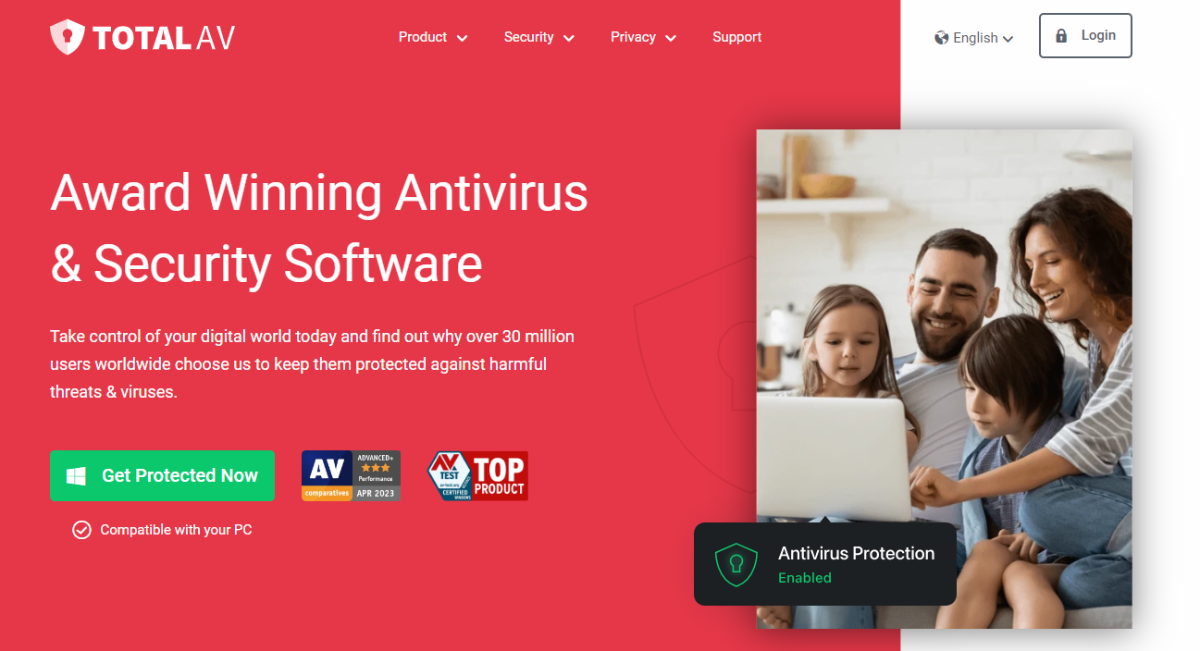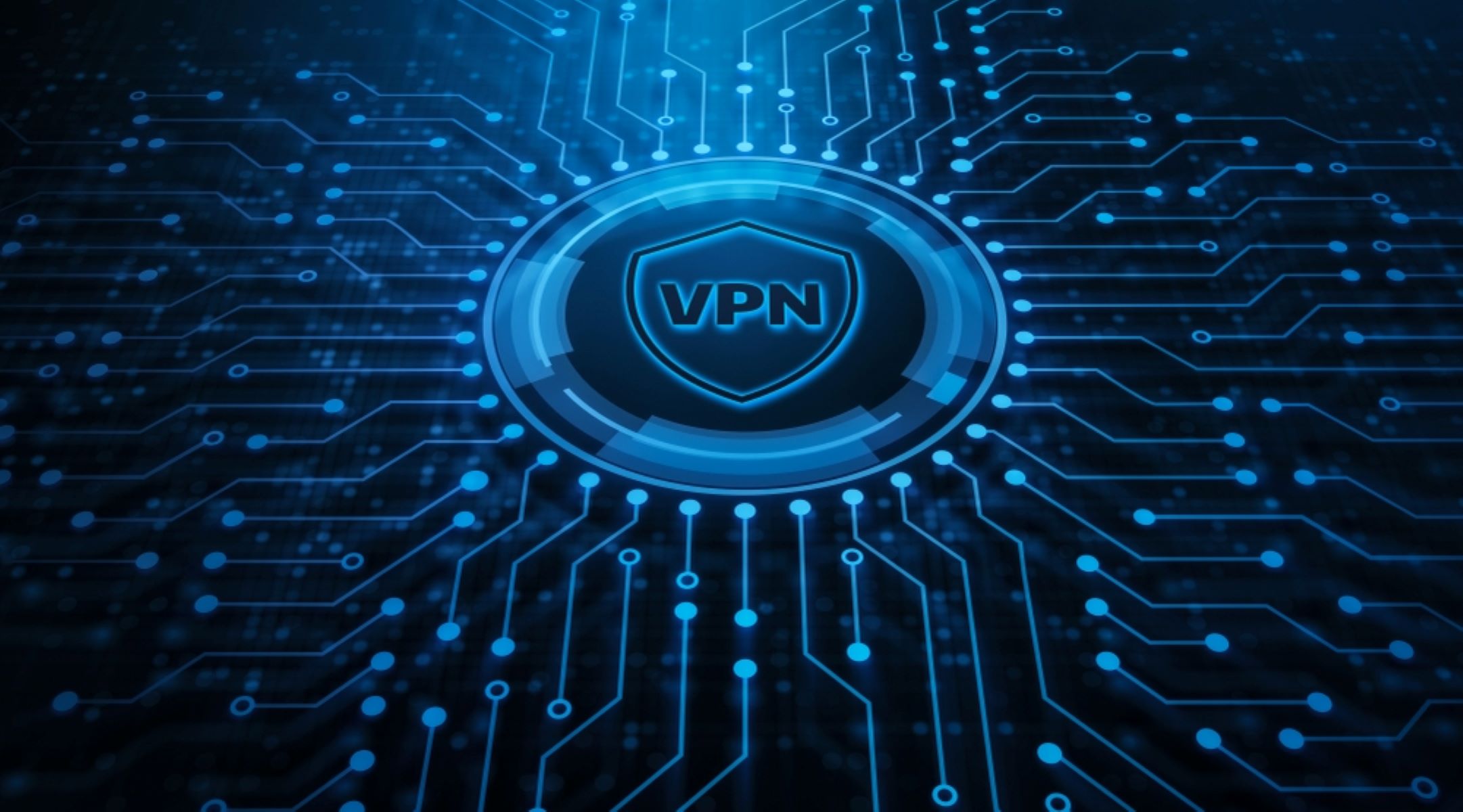Introduction
Welcome to the digital age, where our personal information is more vulnerable than ever. In recent years, the Dark Web has become a notorious hub for illegal activities, including the sale of sensitive data such as email addresses. If you’ve ever wondered if your email is floating around on the Dark Web, you’re not alone.
The Dark Web, also known as the Darknet, is a part of the internet that can only be accessed through specialized software, providing anonymity to users. It is often associated with illicit activities, ranging from drug trafficking to identity theft. However, it’s important to note that not all activity on the Dark Web is illegal.
So, how did your email end up on the Dark Web? There are numerous ways your email address can fall into the wrong hands. It could be a result of a data breach, where hackers gain unauthorized access to a company’s database and steal user information, including email addresses. Cybercriminals may also obtain email addresses through phishing attacks, where they trick unsuspecting users into revealing their personal information.
If you’re concerned about the security of your email account and want to proactively protect yourself from potential threats, this article will guide you through the steps to get your email off the Dark Web. By following these precautions, you can minimize the risk of your email address being exposed and used for malicious purposes.
What is the Dark Web?
The Dark Web, often portrayed in movies and on TV as a mysterious and dangerous place, is a part of the internet that is intentionally hidden and not easily accessible to the average user. Unlike the surface web that we commonly browse, which can be accessed through search engines like Google, the Dark Web requires special software to access its content.
One such software is Tor (The Onion Router), which is used to anonymize internet traffic by routing it through a network of relays around the world. This process makes it virtually impossible for anyone to track the user’s location or access their personal information. As a result, Tor is often associated with illicit activities and is a popular gateway to the Dark Web.
On the Dark Web, users can find a variety of hidden websites that are not indexed by traditional search engines. These websites often have domain extensions like .onion or .i2p, indicating their anonymity. While the Dark Web itself is not inherently illegal, it has gained a reputation for hosting various illicit marketplaces, where drugs, weapons, counterfeit documents, and stolen data are commonly bought and sold.
It’s essential to understand that the Dark Web is just a small fraction of the overall internet. The surface web, which includes websites like social media platforms, news sites, and online stores, is much more extensive and accessible to the general public. The Dark Web, on the other hand, is primarily used by individuals seeking anonymity or engaging in illegal activities.
Due to the nature of the Dark Web, law enforcement agencies face significant challenges in identifying and prosecuting criminals operating within this hidden realm. However, it’s important to note that there are legitimate uses for the Dark Web, such as protecting the privacy of journalists, activists, and individuals living in oppressive regimes.
Now that we have a basic understanding of the Dark Web, let’s explore why your email might be at risk and how to mitigate those risks.
Why is your email on the Dark Web?
You might be wondering how your email address ended up on the Dark Web in the first place. There are several reasons why this could happen, and understanding these reasons is crucial for protecting your online privacy and security.
One common way your email address may end up on the Dark Web is through data breaches. Data breaches occur when hackers gain unauthorized access to a company’s database and steal user information, including email addresses. Unfortunately, data breaches have become increasingly common in recent years, affecting millions of individuals worldwide. Cybercriminals then sell this stolen information on the Dark Web, making it accessible to other malicious actors.
Another way your email can make its way to the Dark Web is through phishing attacks. In a phishing attack, cybercriminals impersonate legitimate entities to trick you into revealing sensitive information, such as your login credentials or personal details. If you fall victim to a phishing attack and unknowingly provide your email address, it may end up in the wrong hands and eventually find its way onto the Dark Web.
Furthermore, using weak and easily guessable passwords can make your email account vulnerable to hacking. If cybercriminals manage to crack your password, they can gain access to your email account and potentially use it for malicious purposes. This includes selling your email address on the Dark Web or using it to launch further phishing campaigns.
It’s also worth noting that some individuals intentionally share their email addresses on the Dark Web as part of illicit activities or to join hidden communities. These individuals may use the Dark Web for illegal purposes, such as trading drugs or engaging in cybercrime.
Regardless of how your email address ended up on the Dark Web, it’s crucial to take steps to protect yourself and remove it from circulation. In the following sections, we will explore practical steps you can take to safeguard your email account and minimize the risk of your information being exploited.
Steps to get your email off the Dark Web
Discovering that your email address is on the Dark Web can be alarming, but there are steps you can take to remove it from circulation and protect yourself from potential threats. By following these precautions, you can significantly reduce the risk of your email address being used for malicious purposes.
- Monitoring your online presence: Regularly monitor your online presence using tools like Google Alerts or specialized services that notify you if your email address appears on the Dark Web. Early detection allows you to take immediate action to mitigate the potential damage.
- Securing your email account: Strengthen the security of your email account by enabling features like two-factor authentication, which adds an extra layer of protection. Also, ensure that your email provider offers robust security measures and encryption for transmitting and storing your data.
- Changing passwords regularly: Create strong, unique passwords for your email account and change them periodically. Avoid using easily guessable passwords or using the same password for multiple accounts to prevent unauthorized access.
- Enabling two-factor authentication: Two-factor authentication, or 2FA, adds an extra layer of security by requiring a second form of verification, such as a unique code sent to your mobile device, in addition to your password. Enable this feature for your email account to enhance its security.
- Avoiding suspicious emails and phishing attempts: Be cautious when opening emails and avoid clicking on suspicious links or downloading attachments from unknown senders. Phishing emails often trick users into revealing sensitive information, so exercise caution and verify the legitimacy of the sender and their attachments before taking any action.
- Using strong and unique passwords: Create strong passwords that include a mix of uppercase and lowercase letters, numbers, and special characters. Avoid using common patterns or easily guessable information, such as your birthdate or pet’s name. Additionally, use different passwords for each online account you have.
- Regularly updating your software and applications: Keep your operating system, antivirus software, and applications up to date with the latest security patches. Updating regularly ensures that any vulnerabilities that could be exploited by hackers are addressed promptly.
- Checking for data breaches: Use trusted websites or services that allow you to check if your email address has been involved in any known data breaches. This gives you an idea of potential risks and enables you to take appropriate steps to secure your information.
By implementing these steps, you can significantly reduce the chances of your email address being targeted or exploited on the Dark Web. It’s important to stay vigilant and consistent with these security measures to protect your online privacy and maintain control over your personal information.
Monitoring your online presence
One of the essential steps to get your email off the Dark Web is monitoring your online presence. By staying vigilant and proactive, you can identify if your email address has appeared on the Dark Web and take immediate action to mitigate any potential risks.
There are various tools and services available that can assist in monitoring your online presence. One popular option is Google Alerts, a free service that notifies you whenever your chosen keywords, such as your email address, appear in search results. By setting up alerts for your email address, you will be alerted if it surfaces on the Dark Web.
In addition to Google Alerts, several specialized services are designed to monitor the Dark Web and alert you if your email address appears in any compromised data or criminal forums. These services scour the Dark Web for any mention of your email address and provide you with timely notifications, allowing you to take prompt action.
Upon receiving an alert, it’s crucial to treat it seriously and investigate the source and potential risks associated with your email address being exposed on the Dark Web. If you confirm that your email has indeed been compromised, it’s important to take immediate action to protect yourself.
Firstly, change your email account’s password to a strong, unique password that is not easily guessable. Changing the password ensures that any unauthorized access is immediately revoked and prevents further unauthorized use of your account.
Secondly, consider reaching out to the email service provider to report the incident and inquire about additional security measures or recommendations they may have. They may be able to assist you in implementing extra security measures to enhance the protection of your email account.
Lastly, monitor your email account closely for any suspicious activities or unfamiliar login attempts. Keep an eye out for any unusual emails, requests for personal information, or changes to your account settings. If you notice anything suspicious, report it immediately to your email service provider and take appropriate steps to secure your account.
By monitoring your online presence, utilizing tools like Google Alerts, and promptly responding to any alerts or signs of compromise, you can actively protect your email address and prevent it from being exploited on the Dark Web.
Securing your email account
Securing your email account is paramount to keeping your information safe and preventing it from being exposed on the Dark Web. By implementing robust security measures, you can significantly reduce the risk of unauthorized access and potential exploitation of your email address.
One of the most crucial steps in securing your email account is choosing a reputable and trustworthy email service provider. Opt for a provider that has a strong track record in security, offers encryption for transmitting and storing your data, and implements stringent security measures to protect user accounts.
Once you have selected a reliable email provider, there are several security features you should consider enabling to enhance the protection of your account:
- Two-factor authentication (2FA): Enable two-factor authentication for your email account. 2FA adds an extra layer of security by requiring a second form of verification, such as a unique code sent to your mobile device, in addition to your password. This ensures that even if someone manages to obtain your password, they won’t be able to access your account without the additional verification.
- Account recovery options: Set up account recovery options, such as adding a secondary email address or a phone number, to your email account. This will allow you to recover your account in case you forget your password or encounter any other account-related issues.
- Strong and unique passwords: Create a strong and unique password for your email account. Avoid using common and easily guessable passwords, such as “123456” or “password.” Include a combination of upper and lowercase letters, numbers, and special characters to create a strong password that is difficult to crack.
- Regularly change your password: Change your email account password periodically. This ensures that even if someone gains unauthorized access to your password, they won’t have prolonged access to your account.
- Review account activity: Regularly review the activity logs or account activity details provided by your email service provider. This allows you to monitor any suspicious login attempts or unusual account activities. If you notice any unfamiliar activity, report it to your email service provider immediately.
- Beware of third-party applications: Be cautious when granting access to third-party applications that request permission to access your email account. Ensure that these applications are trustworthy and secure, as granting them access could potentially compromise the security of your email account.
By securing your email account with these measures, you can create a strong defense against unauthorized access and mitigate the risk of your email address being exploited on the Dark Web. Stay vigilant, monitor your account regularly, and take swift action if any suspicious activities occur.
Changing passwords regularly
Regularly changing your passwords is a crucial step in maintaining the security of your email account and preventing your information from being compromised on the Dark Web. By changing passwords frequently, you minimize the risk of unauthorized access and enhance the protection of your email address.
Here are some key reasons why changing passwords regularly is important:
- Preventing unauthorized access: By changing your password regularly, you reduce the chance of someone obtaining your password through various means, such as phishing attacks or data breaches. Even if your password has been compromised, changing it renders the stolen password ineffective, preventing unauthorized access to your email account.
- Protecting against brute-force attacks: Brute-force attacks involve automated programs attempting to guess your password by systematically trying numerous combinations. By changing your password regularly and using strong, unique passwords, you make it significantly more challenging for these attacks to succeed.
- Minimizing the impact of data breaches: Data breaches have become increasingly common, and your email address may be among the compromised data available on the Dark Web. By changing your password, you reduce the potential damage caused by a data breach, as the stolen password becomes useless to the attackers.
- Mitigating the risks of password reuse: Many individuals reuse passwords across multiple accounts, making them more vulnerable to cyberattacks. Changing passwords regularly ensures that even if one account is breached, your other accounts, including your email, remain protected.
When changing your password, consider the following tips to maximize its effectiveness:
- Create a strong and unique password: Use a combination of uppercase and lowercase letters, numbers, and special characters to create a strong, unique password. Avoid using easily guessable information, such as your name or birthdate, and refrain from using common passwords like “123456” or “password”.
- Avoid password patterns: Do not use sequential or easily identifiable patterns, such as “abcd1234” or “qwertyuiop”. These patterns are often targeted by attackers and can be easily guessed.
- Consider using a password manager: Utilize a password manager to generate and store your passwords securely. Password managers can create strong, unique passwords for you and remember them, reducing the burden of remembering multiple passwords.
- Update security questions: Alongside changing your password, review and update your security questions or change them to more secure options. Ensure that the answers to your security questions are not easily guessable and are known only to you.
Adopting the habit of changing passwords regularly significantly strengthens the security of your email account and reduces the risk of your email address being exposed on the Dark Web. Make password changes a routine practice, and consider using a password manager to simplify the process while ensuring robust security for your accounts.
Enabling two-factor authentication
Enabling two-factor authentication (2FA) is a powerful security measure that adds an extra layer of protection to your email account and helps safeguard your information from being exploited on the Dark Web. By implementing 2FA, you create an additional barrier that requires more than just a password to access your account, significantly reducing the risk of unauthorized access.
Here’s why enabling two-factor authentication is crucial:
- Enhanced security: Two-factor authentication adds an extra layer of security by requiring a second form of verification in addition to your password. This typically involves receiving a unique code on your mobile device that must be entered during the login process. Even if someone manages to obtain your password, they won’t be able to access your account without the additional verification.
- Protection against password-related breaches: Password breaches and leaks have become increasingly common, with millions of credentials being exposed on the Dark Web. Enabling 2FA ensures that even if your password is compromised, unauthorized individuals still cannot gain access to your email account without the second factor of verification.
- Added defense against phishing attacks: Phishing attacks are designed to trick users into revealing their login credentials, including passwords, through fraudulent emails or websites. With 2FA enabled, even if you unknowingly provide your password in a phishing attempt, the attacker would still need the second form of verification, preventing them from accessing your account.
- Flexibility in verification methods: Two-factor authentication supports various verification methods, including SMS codes, email codes, authenticator apps, or physical security keys. Choose the method that works best for you and ensure that you have backup options in case your primary method is unavailable.
- Compatibility with multiple devices: Two-factor authentication can be enabled across multiple devices, providing consistent security across your devices and minimizing the risk of unauthorized access from any device.
Enabling 2FA for your email account is usually a straightforward process. Start by visiting your email provider’s account settings or security settings and look for the 2FA or Two-Step Verification options. Follow the instructions provided to set up the second factor of verification, which may involve linking your mobile device or setting up an authenticator app.
Once 2FA is enabled, you will typically receive a unique code via SMS, email, or through an authenticator app whenever you log in to your email account. Ensure that you have your mobile device or access to the authenticator app to enter the code during the login process.
It’s important to note that while two-factor authentication significantly enhances the security of your email account, it does not provide absolute protection. However, it adds a vital layer of defense against unauthorized access and reduces the risk of your email address ending up on the Dark Web.
By enabling two-factor authentication and ensuring all login attempts require an additional layer of verification, you can greatly enhance the security of your email account and proactively protect yourself from potential threats on the Dark Web.
Avoiding suspicious emails and phishing attempts
One of the most effective ways to protect your email account from being compromised on the Dark Web is to be cautious and vigilant when it comes to suspicious emails and phishing attempts. By developing a keen eye for detecting potential threats, you can avoid falling victim to these malicious activities and keep your email address secure.
Here are some essential tips to help you avoid suspicious emails and phishing attempts:
- Double-check the sender: Always verify the sender’s email address before opening any email. Pay attention to minor inconsistencies or misspellings that may indicate a fraudulent sender trying to deceive you.
- Think before you click: Be wary of clicking on links or attachments in emails, especially if they come from unknown or suspicious senders. Hover over the link to see the actual URL destination before clicking, and only proceed if it appears legitimate and trustworthy.
- Watch out for urgency or alarm: Be cautious of emails that create a sense of urgency, fear, or panic. Scammers often use these tactics to pressure you into taking immediate action without thinking it through. Always stay calm and evaluate the situation before providing any information or taking any requested actions.
- Verify requests for personal information: Beware of emails requesting personal or sensitive information, such as passwords, credit card details, or Social Security numbers. Legitimate organizations typically do not ask for such information via email, so exercise caution and verify the legitimacy of the request through official channels before sharing any personal data.
- Be cautious with email attachments: Avoid opening email attachments unless you were expecting them and can verify their authenticity. Attachments can conceal malware or viruses that can compromise your computer’s security and potentially grant unauthorized access to your email.
- Stay informed about common phishing techniques: Familiarize yourself with common phishing techniques, such as spear phishing (targeting specific individuals) or whaling (targeting high-profile individuals). By staying informed, you can recognize the telltale signs of these tactics and be prepared to defend against them.
- Use spam filters: Enable spam filters provided by your email service provider to help automatically detect and filter out suspicious or unwanted emails. This can help reduce the number of potentially harmful emails that reach your inbox.
- Report suspicious emails: If you receive a suspicious email that appears to be a phishing attempt, report it to your email service provider. Most email providers have dedicated channels for reporting suspected phishing emails, allowing them to investigate and take appropriate action.
By adopting these practices and being cautious about what emails you open, links you click, and information you provide, you can significantly reduce the risk of falling victim to phishing attempts. Remember, your vigilance plays a crucial role in keeping your email account secure and preventing your email address from being targeted on the Dark Web.
Using strong and unique passwords
Using strong and unique passwords is key to protecting your email account and preventing your information from being compromised on the Dark Web. Passwords serve as the first line of defense against unauthorized access, and by following best practices, you can significantly enhance the security of your email account.
Here’s why using strong and unique passwords is critical:
- Preventing brute-force attacks: A strong password can withstand brute-force attacks, where automated programs systematically guess numerous combinations of characters to crack your password. By using a combination of upper and lowercase letters, numbers, and special characters, you create a password that is much more difficult to crack through these automated processes.
- Avoiding password-related breaches: Many data breaches involve stolen passwords. Cybercriminals then sell these passwords on the Dark Web, making them available for exploitation. By using unique passwords for each of your online accounts, including your email, you minimize the risk of password-related breaches and the subsequent exposure of your email address on the Dark Web.
- Protecting against password-guessing: Hackers often employ password-guessing techniques based on personal information, such as names, birthdates, or common words. By using unique, non-dictionary words or phrases that do not contain personal information, you make it significantly more challenging for hackers to guess or crack your password.
- Safekeeping other accounts: Using strong and unique passwords for your email account is crucial not only for its security but also for protecting your other online accounts. Many services are interconnected, and if your email account is compromised, it can provide access to various other accounts, including social media or financial platforms.
- Utilizing a password manager: Consider using a password manager to generate and store your passwords securely. Password managers can create and remember complex passwords for you, alleviating the burden of remembering multiple passwords and ensuring you use strong and unique passwords for each account.
When creating strong and unique passwords, keep the following tips in mind:
- Length and complexity: Aim for a password that is at least 12 characters long, as longer passwords provide greater security. Include a combination of uppercase and lowercase letters, numbers, and special characters to add complexity and ensure that it becomes resistant to password-cracking methods.
- Avoid common patterns or identifiable information: Stay away from using obvious patterns or easily guessable information, such as sequences (e.g., “123456” or “abcdefg”) or personal information like your name, date of birth, or address. These can be easily exploited by hackers.
- Don’t reuse passwords: Use a unique password for each online account. Reusing passwords across multiple accounts increases the risk of multiple accounts being compromised if one password is leaked or cracked.
- Regularly update passwords: Change your passwords periodically, ideally every 3-6 months. Regularly updating your passwords adds an extra layer of security and reduces the risk of long-term unauthorized access to your email account.
By using strong and unique passwords, you greatly enhance the security of your email account and minimize the risk of your email address falling into the wrong hands on the Dark Web. Remember to keep your passwords secure, avoid sharing them with others, and consider using a trusted password manager to simplify the management of your passwords.
Regularly updating your software and applications
Regularly updating your software and applications is crucial for maintaining the security of your email account and preventing your information from being compromised on the Dark Web. Software updates often include important security patches and bug fixes that address vulnerabilities that could be exploited by hackers.
Here are key reasons why regular software and application updates are important:
- Patching vulnerabilities: The discovery of new vulnerabilities is an ongoing process, and software developers continually release updates to address these vulnerabilities. By keeping your software and applications up to date, you ensure that known vulnerabilities are patched, minimizing the risk of exploitation.
- Protecting against malware: Malware is a significant threat to your email account security. Outdated software and applications are more susceptible to malware attacks, which can lead to unauthorized access to your email and the potential exposure of your email address on the Dark Web. Regular updates, along with up-to-date security software, help protect against such attacks.
- Preventing software conflicts: Updates often include improvements in compatibility and performance, ensuring that your software and applications work smoothly together. Failure to update can result in compatibility issues, leading to glitches, slowdowns, or even system crashes.
- Addressing known vulnerabilities: Software updates address known vulnerabilities that are often publicized and exploited by cybercriminals. Failing to update leaves your system exposed and vulnerable to attacks that specifically target these known vulnerabilities.
- Enhancing security features: Updates sometimes introduce new security features and enhancements to strengthen your software’s defenses. These new features can provide additional layers of protection and safeguard your email account against evolving threats on the Dark Web.
Regularly updating your software and applications is straightforward and typically involves a few simple steps:
- Enable automatic updates: Many software and applications offer the option to automatically check for updates and install them. Enabling this feature ensures that updates are applied without requiring manual intervention.
- Check for updates manually: If automatic updates are not available or enabled, periodically check for updates manually. Most software and applications have a dedicated update option in their settings or menus.
- Keep your operating system updated: Remember to update your operating system as well, as it plays a critical role in overall system security. Enable automatic updates for your operating system or regularly check for available updates.
- Update applications and plugins: Don’t forget to update your web browsers, email clients, and plugins. These applications are often targeted by hackers, so keeping them updated is essential for protecting your email account and preventing unauthorized access.
By regularly updating your software and applications, you fortify your defenses, reduce vulnerabilities, and minimize the risk of your email account being compromised on the Dark Web. Remember to enable automatic updates where possible and remain proactive in applying updates to ensure continuous protection.
Checking for data breaches
Checking for data breaches is an essential step in proactively protecting your email account from being compromised on the Dark Web. Data breaches have become alarmingly common, with countless user credentials exposed, and checking for potential breaches can help you take swift action to secure your information.
Here’s why regularly checking for data breaches is important:
- Early detection: Being aware of data breaches that involve your email address allows you to take immediate action to secure your account. Early detection enables you to implement necessary security measures, such as changing passwords or enabling additional authentication methods, to mitigate potential risks.
- Preventing unauthorized access: If your email address is part of a data breach, cybercriminals may attempt to use it to gain unauthorized access to your email account or other online services. By promptly changing your passwords and implementing other security measures, you can prevent unauthorized access and reduce the chances of your email address being exploited on the Dark Web.
- Minimizing the impact of compromised information: Data breaches can expose a wealth of personal information beyond email addresses. By checking for breaches, you can identify which pieces of your information have been compromised and take steps to limit the potential consequences, such as monitoring your financial accounts or enabling additional security measures on other platforms.
- Being proactive in securing your accounts: Regularly checking for data breaches empowers you to be proactive in securing your accounts and protecting your information. It allows you to stay ahead of potential threats, take control of your online security, and minimize the risks associated with compromised data.
Here are some resources and methods to check for data breaches:
- Data breach notification websites: Several websites specialize in tracking and reporting data breaches. These sites allow you to search for your email address to determine if it has been involved in any known breaches.
- Have I Been Pwned: Have I Been Pwned (hibp.com) is a popular and trusted service that allows you to check if your email address has been compromised in any known data breaches. The service provides valuable insights and information about the breached data.
- Email service provider notifications: Some email service providers proactively notify their users if their email addresses have been involved in data breaches. Pay attention to any notifications you receive and follow the recommended actions to secure your account.
- Security apps and plugins: Consider installing security apps or plugins that offer breach monitoring features. These apps can regularly check your email address against known breach databases, alerting you if any matches are found.
When you discover that your email address has been involved in a data breach, it’s crucial to take immediate action. Change your email account password and ensure you’re using a strong and unique password. Consider enabling two-factor authentication for added security. Additionally, review and update security measures for other online accounts that may have been compromised.
Through regular checks for data breaches and taking prompt action, you can reduce the risk of your email address being exploited on the Dark Web and protect your personal information and online security.
Conclusion
Securing your email account and protecting your information from the Dark Web requires a proactive approach and adherence to best practices. By following the steps outlined in this article, you can significantly reduce the risk of your email address being compromised and prevent it from landing on the Dark Web.
We began by understanding the Dark Web and the various ways your email address could end up there, such as data breaches and phishing attempts. We then delved into practical steps to get your email off the Dark Web:
- Monitoring your online presence to detect any appearances of your email address on the Dark Web
- Securing your email account with features like two-factor authentication to add an extra layer of protection
- Changing passwords regularly to minimize the risk of unauthorized access
- Enabling two-factor authentication to enhance account security
- Avoiding suspicious emails and phishing attempts by being cautious and vigilant
- Using strong and unique passwords to safeguard your email account
- Regularly updating your software and applications to patch vulnerabilities
- Checking for data breaches to take prompt action if your email address has been compromised
Remember, securing your email account is an ongoing process that requires constant vigilance. Regularly review and update your security measures, stay informed about common threats, and be mindful of your online activities to protect yourself from potential risks on the Dark Web.
By adopting these practices and making them a priority, you can safeguard your email account, protect your personal information, and reduce the likelihood of your email address appearing on the Dark Web. Stay proactive, stay informed, and prioritize your online security to keep your email and digital presence safe.









